Abstract
Amplitude fluctuations of evoked synaptic responses can be used to extract information on the probabilities of release at the active sites, and on the amplitudes of the synaptic responses generated by transmission at each active site. The parameters that describe this process must be obtained from an incomplete data set represented by the probability density of the evoked synaptic response. In this paper, the equations required to calculate these parameters using the Expectation-Maximization algorithm and the maximum likelihood criterion have been derived for a variety of statistical models of synaptic transmission. These models are ones where the probabilities associated with the different discrete amplitudes in the evoked responses are a) unconstrained, b) binomial, and c) compound binomial. The discrete amplitudes may be separated by equal (quantal) or unequal amounts, with or without quantal variance. Alternative models have been considered where the variance associated with the discrete amplitudes is sufficiently large such that no quantal amplitudes can be detected. These models involve the sum of a normal distribution (to represent failures) and a unimodal distribution (to represent the evoked responses). The implementation of the algorithm is described in each case, and its accuracy and convergence have been demonstrated.
Full text
PDF
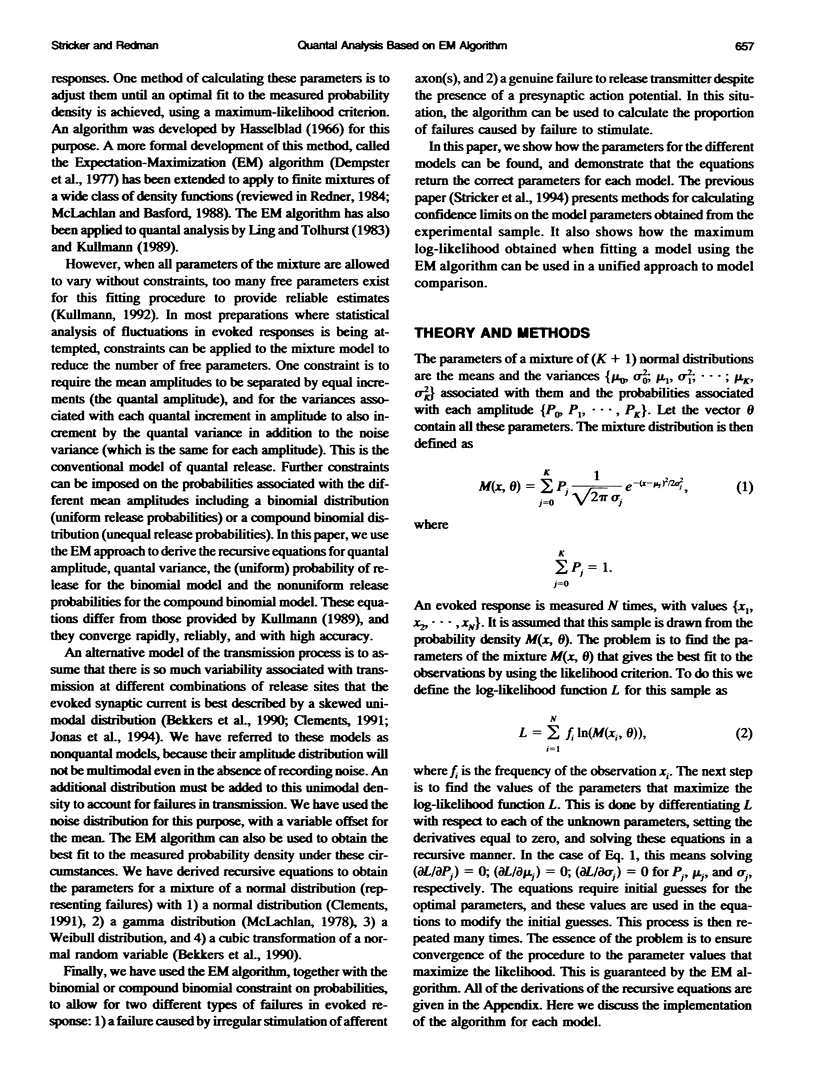
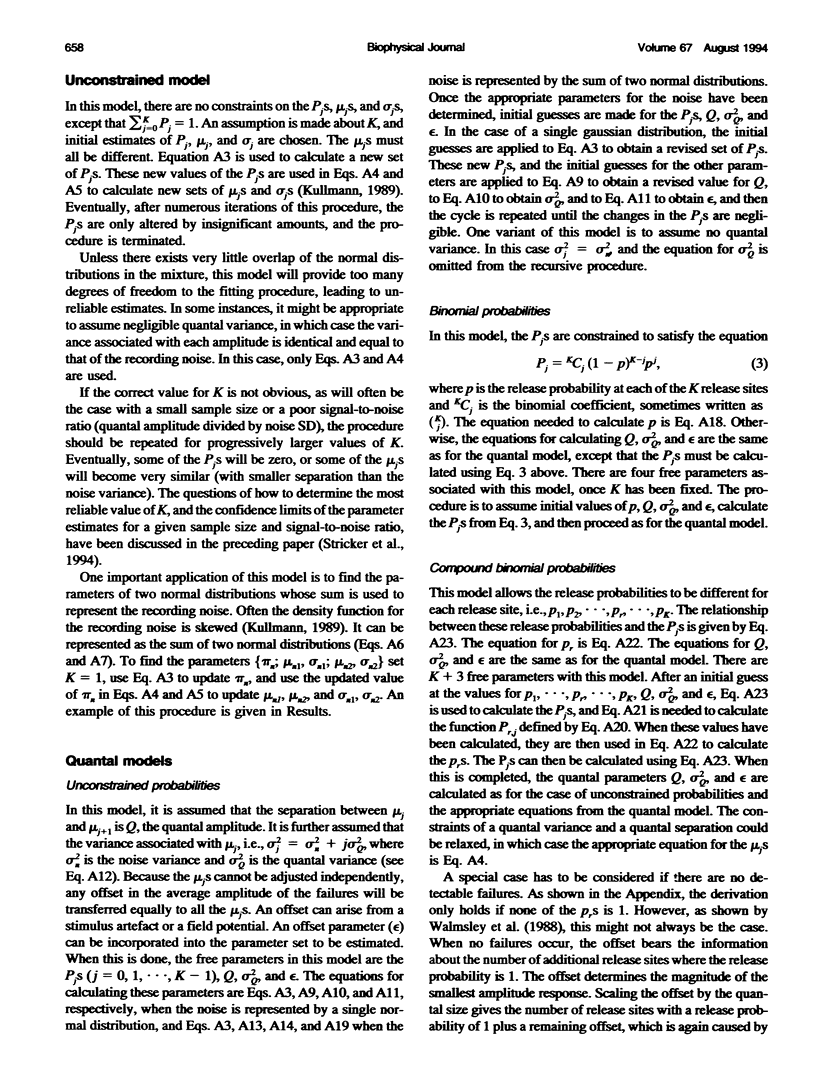

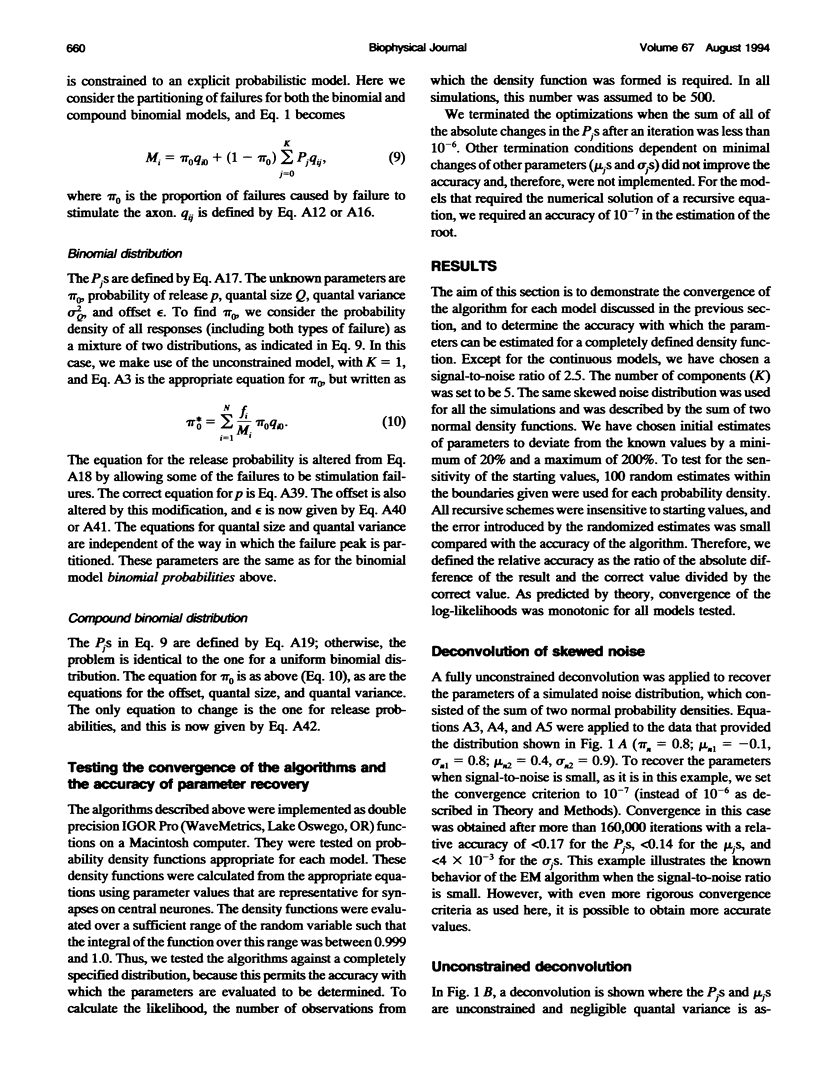
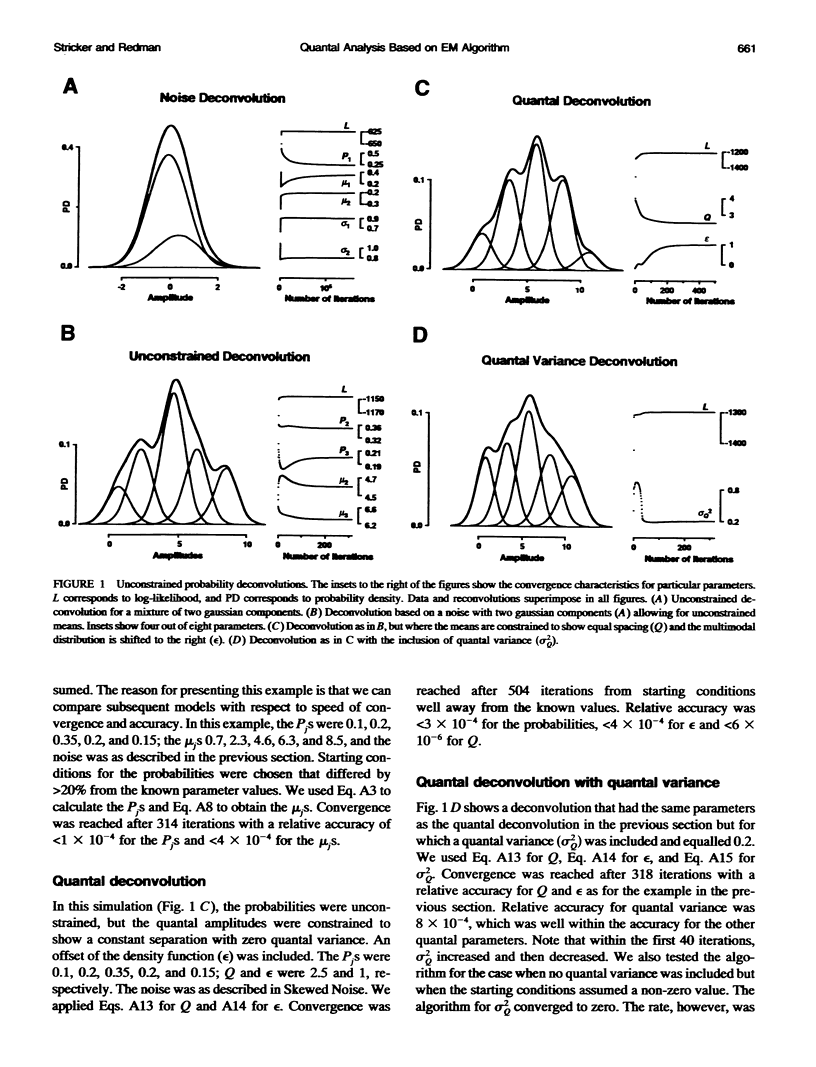
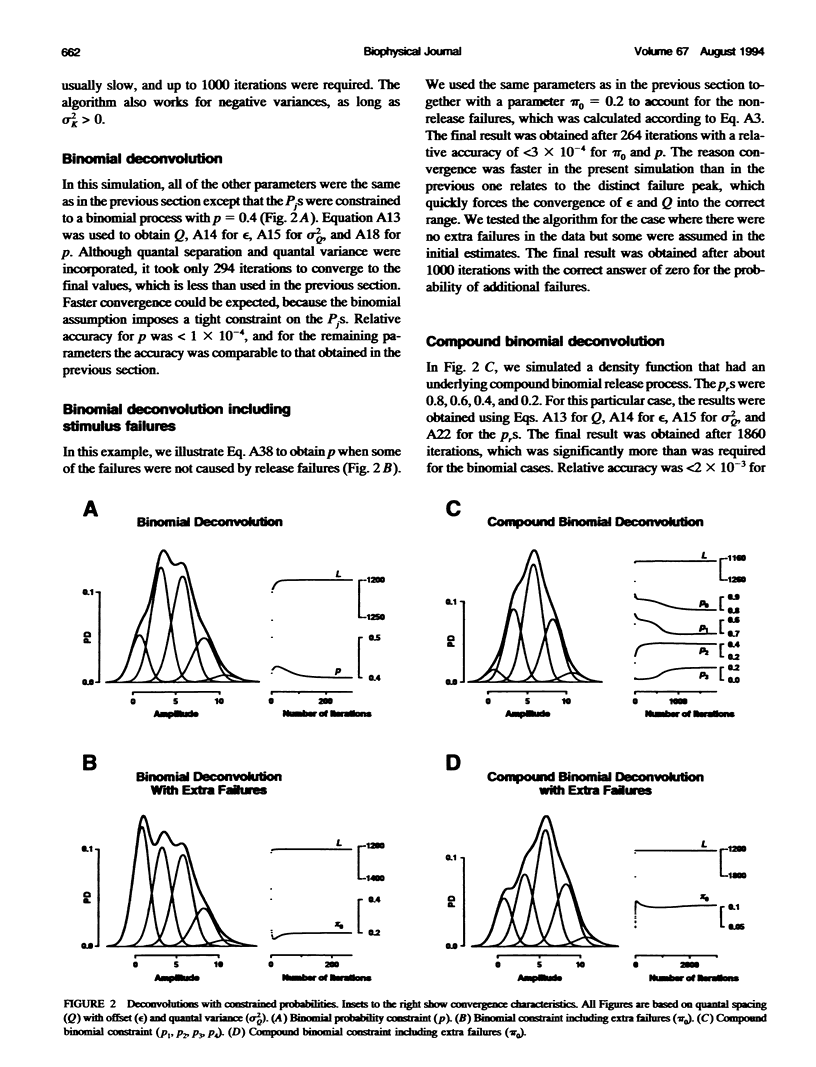
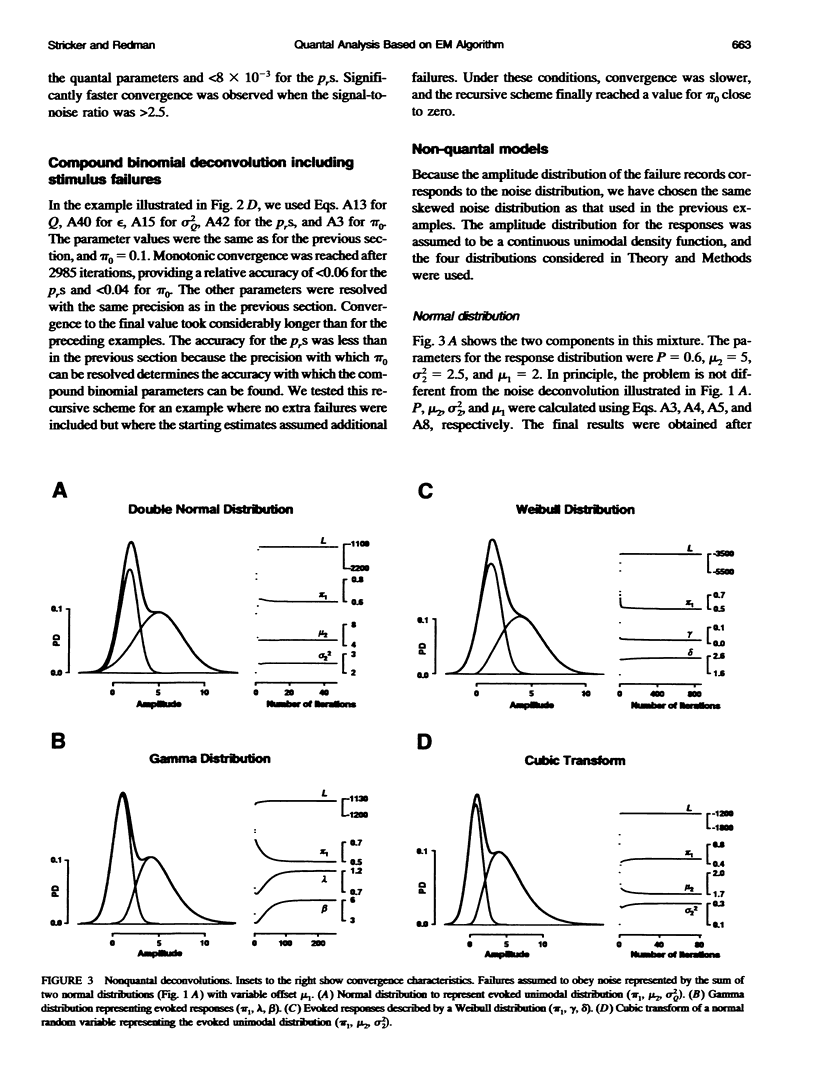
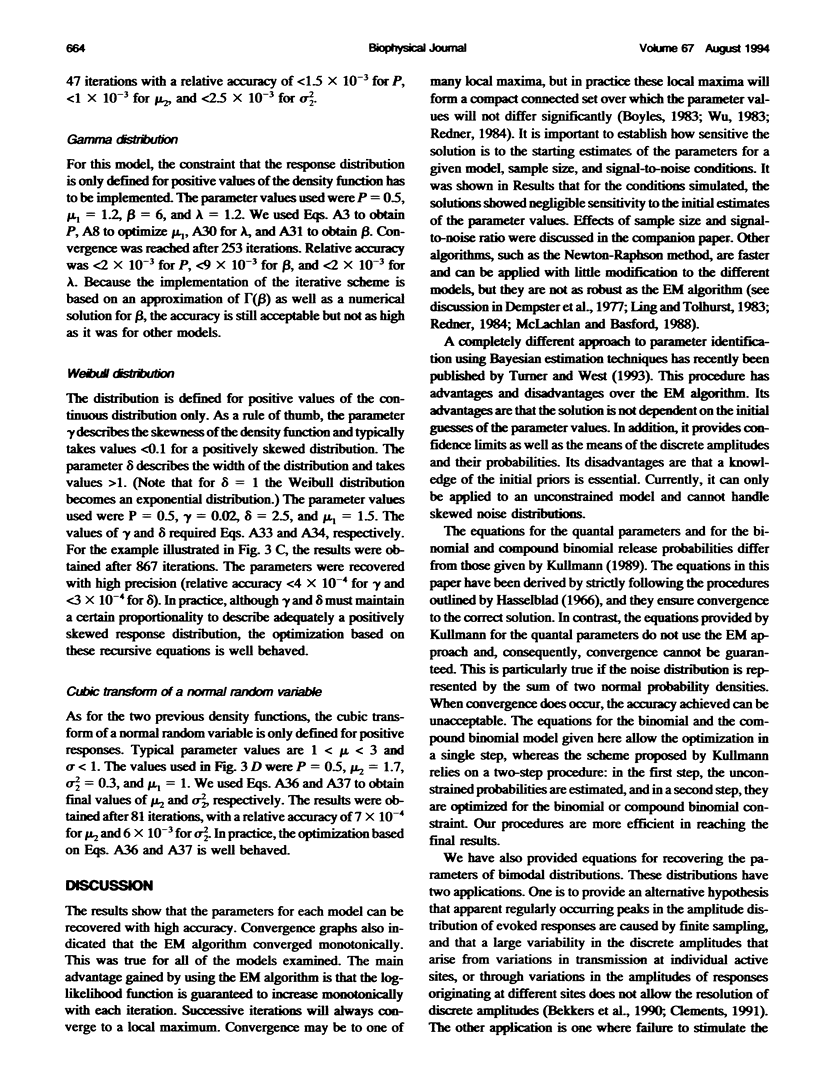
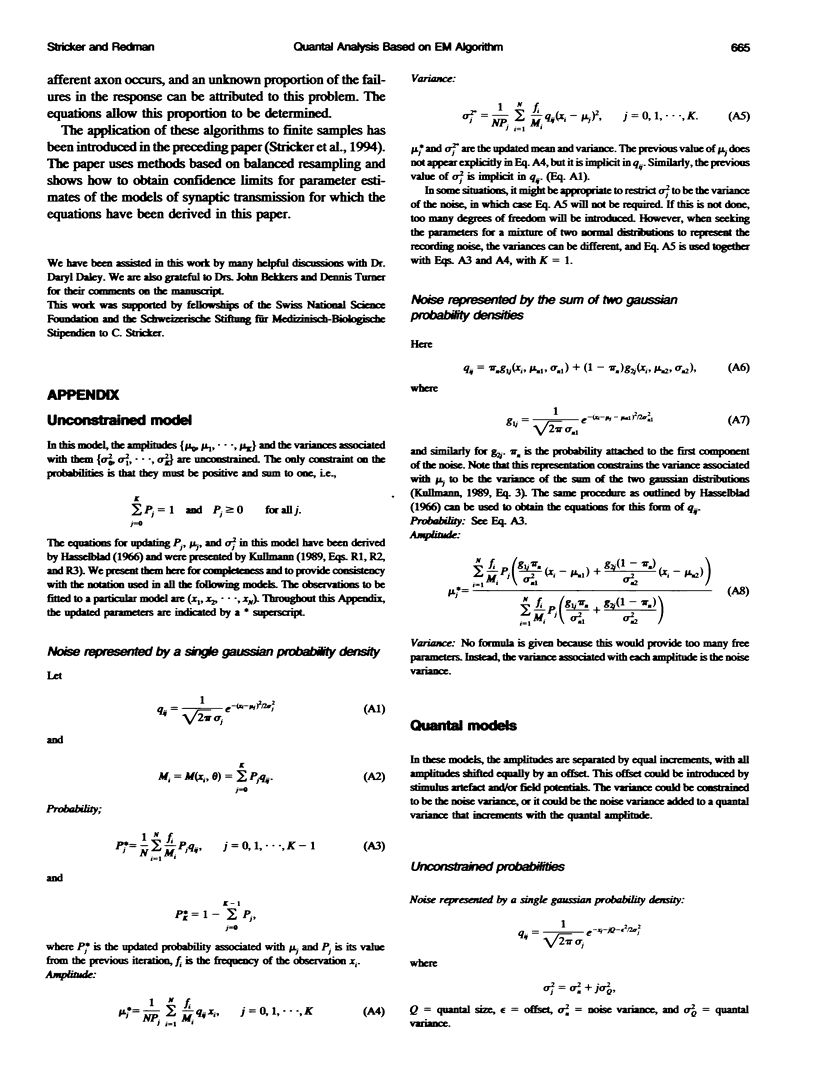
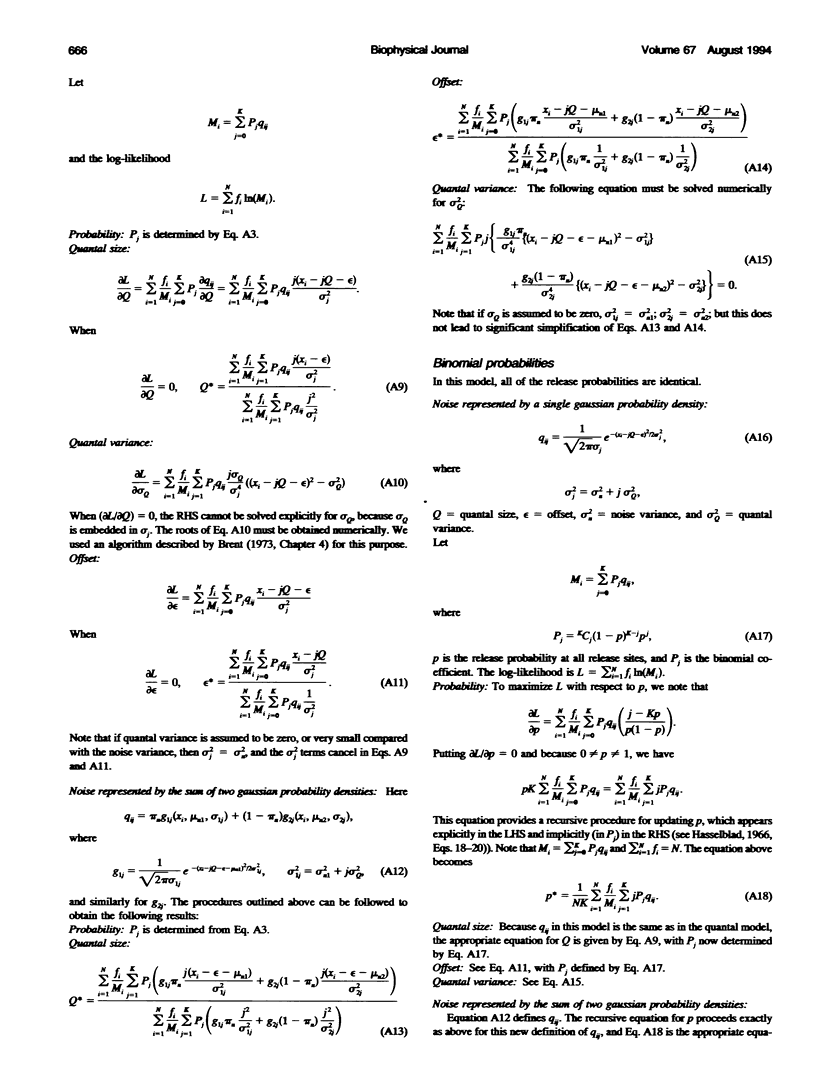
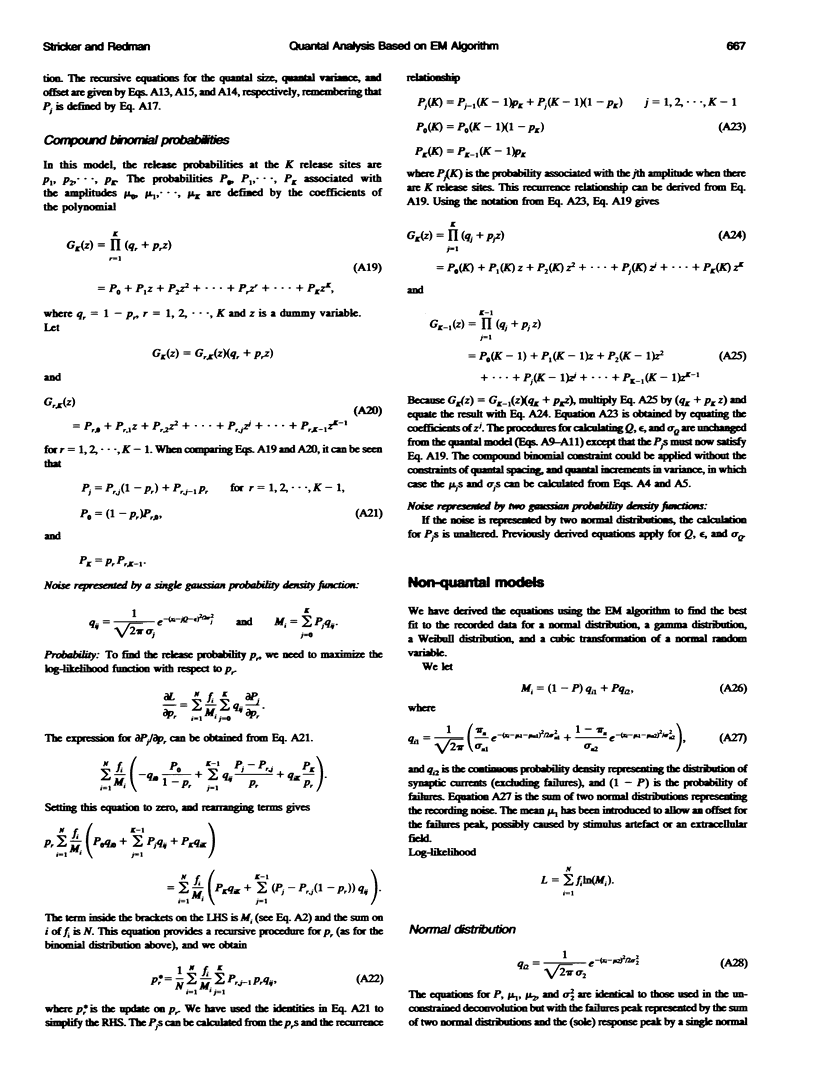
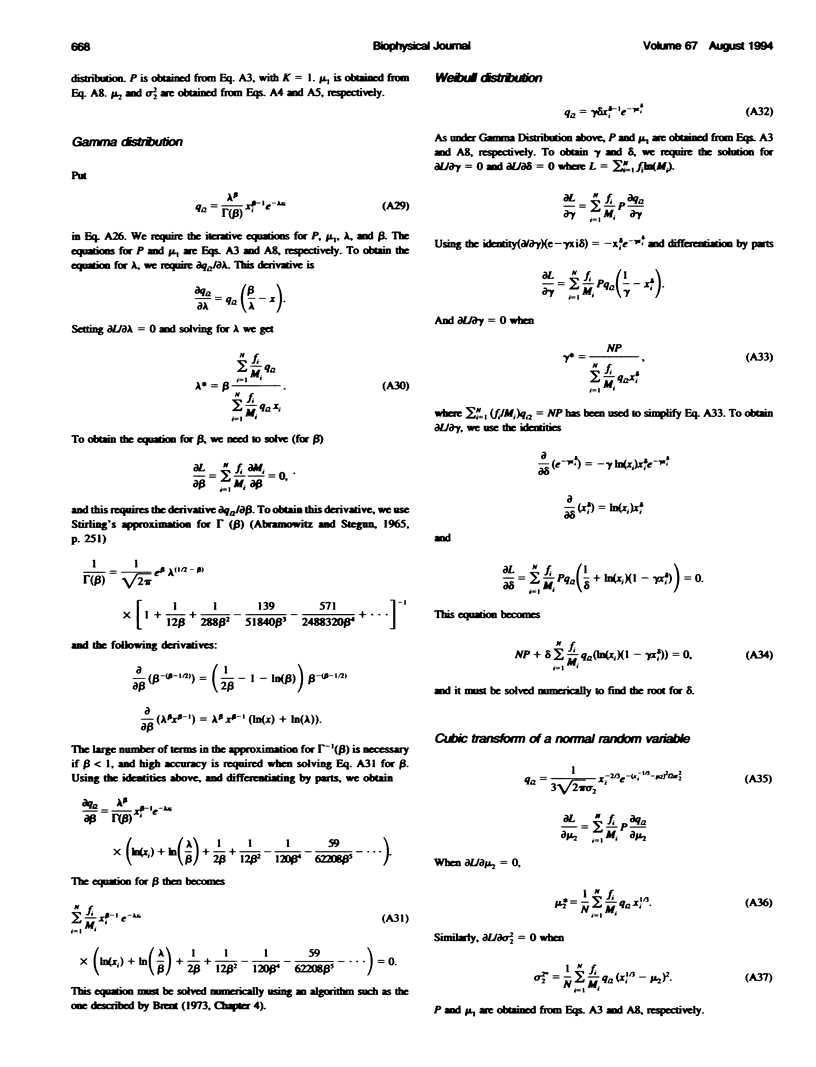
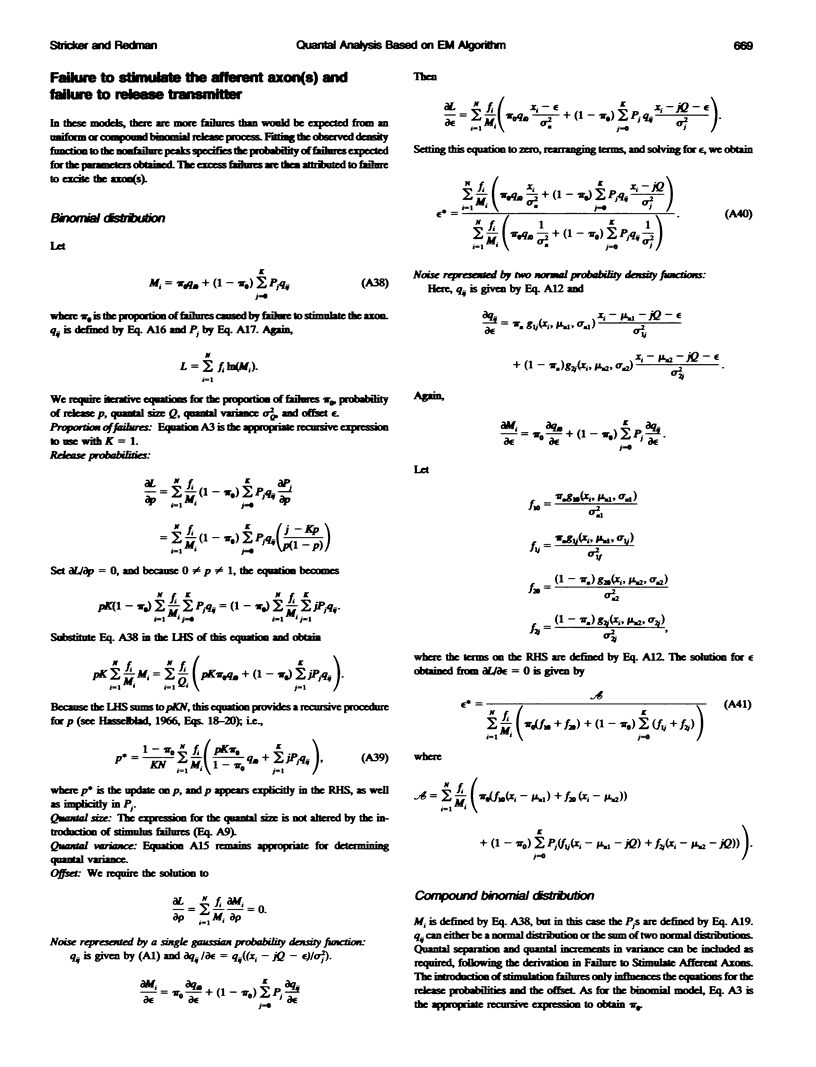
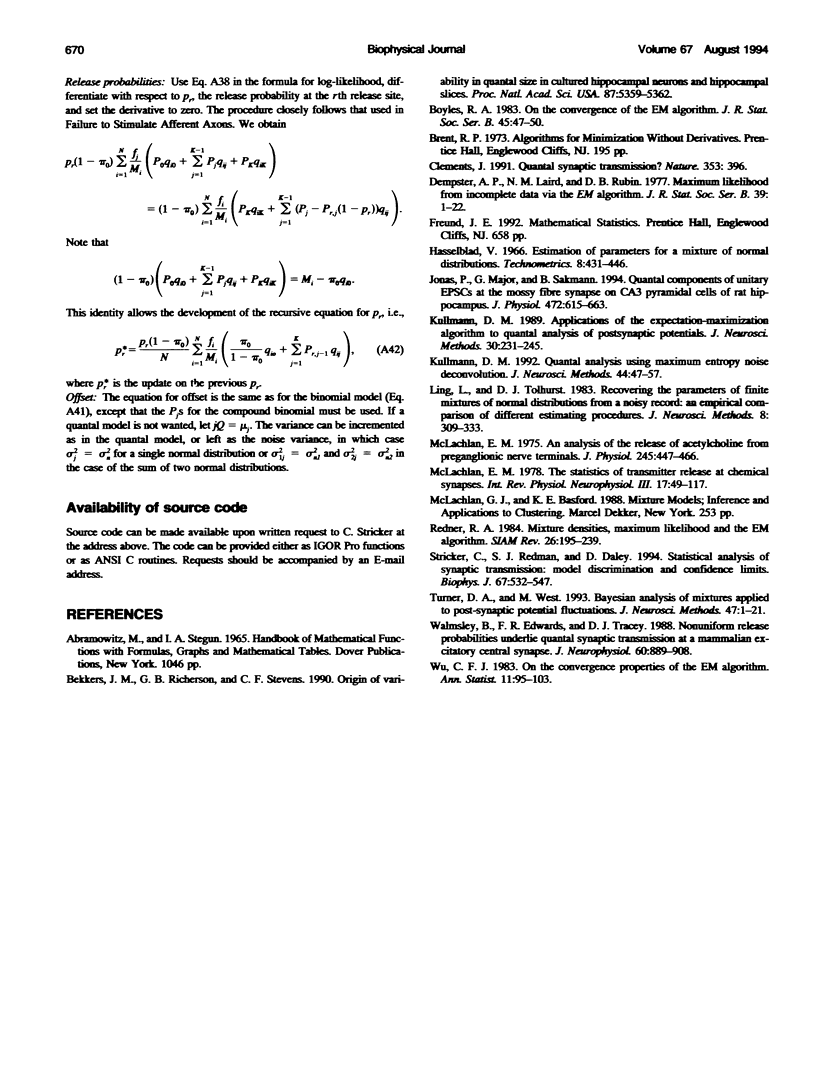
Selected References
These references are in PubMed. This may not be the complete list of references from this article.
- Bekkers J. M., Richerson G. B., Stevens C. F. Origin of variability in quantal size in cultured hippocampal neurons and hippocampal slices. Proc Natl Acad Sci U S A. 1990 Jul;87(14):5359–5362. doi: 10.1073/pnas.87.14.5359. [DOI] [PMC free article] [PubMed] [Google Scholar]
- Clements J. Quantal synaptic transmission? Nature. 1991 Oct 3;353(6343):396–396. doi: 10.1038/353396a0. [DOI] [PubMed] [Google Scholar]
- Jonas P., Major G., Sakmann B. Quantal components of unitary EPSCs at the mossy fibre synapse on CA3 pyramidal cells of rat hippocampus. J Physiol. 1993 Dec;472:615–663. doi: 10.1113/jphysiol.1993.sp019965. [DOI] [PMC free article] [PubMed] [Google Scholar]
- Turner D. A., West M. Bayesian analysis of mixtures applied to post-synaptic potential fluctuations. J Neurosci Methods. 1993 Apr;47(1-2):1–21. doi: 10.1016/0165-0270(93)90017-l. [DOI] [PubMed] [Google Scholar]
- Walmsley B., Edwards F. R., Tracey D. J. Nonuniform release probabilities underlie quantal synaptic transmission at a mammalian excitatory central synapse. J Neurophysiol. 1988 Sep;60(3):889–908. doi: 10.1152/jn.1988.60.3.889. [DOI] [PubMed] [Google Scholar]


